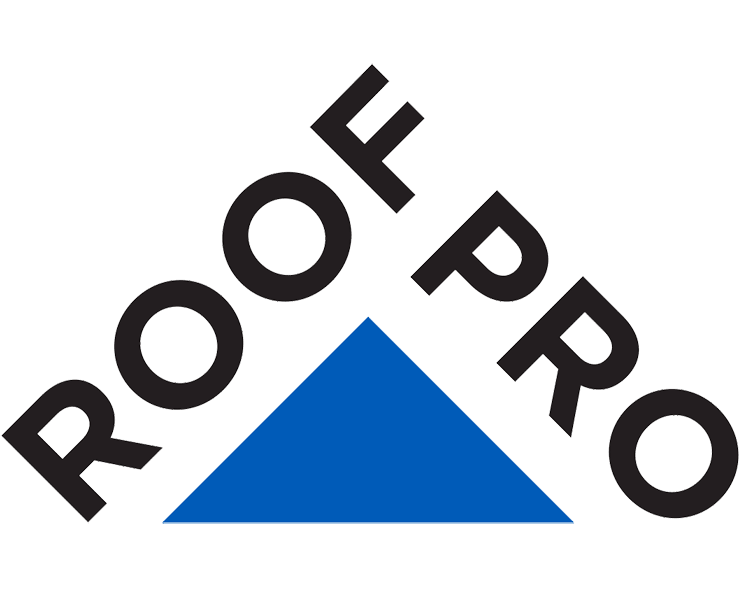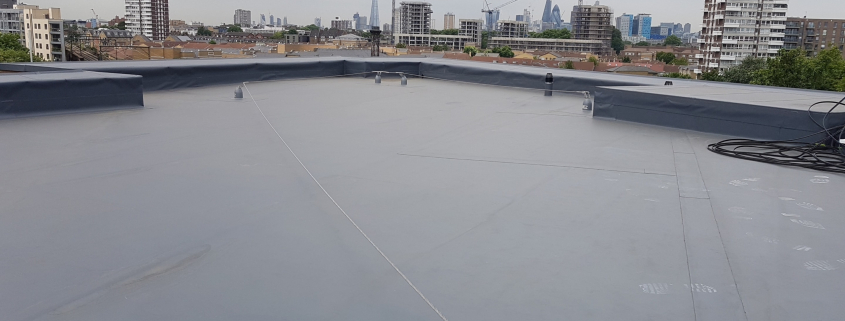Taking a walk around London, the chances are you will spot plenty of flat roofs.
This type of roof is common in commercial buildings and comes packed with benefits, including being energy-efficient and long-lasting.
Want to know more about flat roofs?
Then you’ve come to the right place, as our team at Roofpro London are experts in installing, repairing, and replacing flat roofs.
Here’s our handy guide on the essential things to know about this kind of roof.
What is a Flat Roof?
Now, you would think that a flat roof is called that because it is flat.
Well, you’re right and wrong.
While flat roofing is designed to be as near to flat as possible, there is still a small degree of a slant. This is so rainwater can naturally fall from the roof and not puddle on the top.
Flat roofs are growing in popularity over the years, with many people enjoying the fact they can be turned into a living space that looks modern, and also embracing the efficiency they provide, in cost, flexibility, and space.
So, now we know what a flat roof is, how do we build them?
How to Build a Flat Roof
Flat roofs are often built across timbers that span the area of the roof. To gain the perfect level needed to seem flat but also make sure water runs off, it’s a good idea to taper the timbers.
This is the frame of your roof and using steel joists to help place your timbers is always the best practice, especially when constructing something heavy such as a green roof.
So, once you have your timber frame in place and it is sturdy and secure, it’s time to lay down the roof, which is often made from plywood.
Place some boards across the timbers and then finally place your roofing material across the boards. You must make sure the roof is clean before doing this, and also that any extra insulation measures have been put under the boards.
Secure the roofing material down (often rubber) and your roof is complete.
Now of course, this is a heavily simplified run-through, and if you are looking to add a flat roof to your property, the best idea is to get in touch with the professionals, such as the team at Roofpro London.
The Best Flat Roof Materials
There are several materials that can be used on a flat roof, and here’s three of the more popular choices.
Felt
Using felt on a flat roof is a great choice.
It is durable (lasting a whopping 30 years) and cost-effective. What’s not to like?
Felt is often made from modified bitumen and is regularly combined with fibreglass or polyester as a way of strengthening it against the elements.
GRP Fibreglass
Another great choice for flat roof installation is fibreglass.
This is also known as GRP (glass reinforced polyester) and is a mixture of polyester resin and fine mat glass fibres. Combined, these result in a laminate which can be spread over a flat roof to provide a strong and long-lasting cover.
Similar to felt, the benefits of GRP fibreglass roofing are that it is quick to lay, simple to fix, and lasts a long time (again, around 30 years).
Green Roofing
If you have limited garden space and desire somewhere to sit out in the sun, then why not install a green roof?
These are a really popular choice as they are environmentally friendly, visually stunning and could add value onto your home.
A green roof is basically a garden on top of your property, and you can fill it how you like. Turf, flowers, grass, the possibilities are endless.
And the benefits don’t end there, with green roofs also being brilliant at keeping in warmth and keeping out unwanted sounds.
While more expensive and tougher to maintain, a green roof is a great option for any nature lover.
Lead Roofing
Lead is a really strong choice to cover your flat roof.
Not only that, it also looks really good, offering a sleek and stylish appearance.
When fitted correctly, lead comes with some great benefits, including the fact that it can be moulded and shaped to make sure the perfect fit is achieved for your roof.
While being an expensive option, lead roofs can last for long over 50 years, which makes them a brilliant option for your flat roof construction.
How do you Repair a Flat Roof?
So, what happens if your flat roof gets damaged?
Well, this all depends on the material you are using.
For example, with GRP roofing, you need to give it space to move. This kind of roof expands in the heat and shrinks back in the colder months. If your roof hasn’t been installed correctly then this could lead to cracks.
To fix this, you must lay as close to the same resin as possible to repair the cracks.
It is a similar operation on felt roofs, where you often get tears caused by weather damage. Another thing to keep a close eye on with felt roofs is bubbling, which can be repaired easily if spotted quickly.
If not, the bubble may burst leading to a hole in the roof which is much tougher to fix.
With lead roofing, new sheets can be used to repair any cracks or tears that have formed. Again, the most common reason for these is poor installation.
A green roof is tricky, as it is much harder to spot any roof damage, and also tough to reach the roof under a heavy and thick covering.
In most cases, if there is structural damage to a green roof, it must be partially removed until the repairs have been made.
What is vital in all flat roofs, is that the installation is done in the right way, and that’s why it’s important to consult professionals to construct your roof, and this means you should avoid any issues or repairs.
How to Replace a Flat Roof
Roof’s do have a certain lifespan, and when it is reaching the end, it is time to replace.
So how do you know when your flat roof needs replacing?
Well, there are several tell-tale signs, such as leakages, flooding, blistering and sagging. Especially in felt and GRP roofs, if you notice cracks and the roof is beginning to look shrivelled (known as alligatoring) it may be time to replace.
The process of replacing a roof sound simple, but is far from it.
All of the material on the roof needs to be removed. This can sometimes be done with a spade, in which everything is scraped off until the roof is bare and ready to be laid on again, or sometimes involves melting away some of the material on the roof.
No matter what your roof, safety is paramount, and it is always the best choice to consult a professional before undertaking the task.
The Benefits of Flat Roofs
1. Easy to Maintain
Flat roofs are much easier to care for than pitched roofs.
You have the benefit of easy accessibility. This means you can just inspect your roof with ease by simply climbing on top of it, and also it is much easier to spend time working on repairs.
Keeping a regular eye on a roof is the best way of minimising large amounts of damage and being able to perform regular checks is a great way of doing this.
2. Can Be Used in Different Ways
Another way a flat roof is sometimes preferable to a pitched roof is the versatility it offers.
You can access it and stand on it, meaning if you want to sit and enjoy the sun or read a book, then you can.
Also, you can choose to have a green roof and really bring nature to where you live. If you reside in London, then it can be tricky to find garden space, so having a space you can enjoy that is outside and surrounded by nature is a huge plus.
3. Efficient in Many Ways
A flat roof is always an efficient option.
Firstly, in terms of cost, flat roofs can be quick and easy to repair and construct, often taking around three days, which makes them a cheap way of covering your property.
They are also energy-efficient, providing great insulation when built right.
This is never truer than with a green roof, which provide a thick covering for your home with keeps loud exterior noise and cold weather out.
How Roofpro London can Help with your Flat Roof
If you’re looking for a flat roof, or you already have one and would like it repaired or replaced, then Roofpro London would be glad to help.
Our team of trained roofers are experts in using many different materials to create wonderful flat roofs for you.Get in touch today for a quote.

